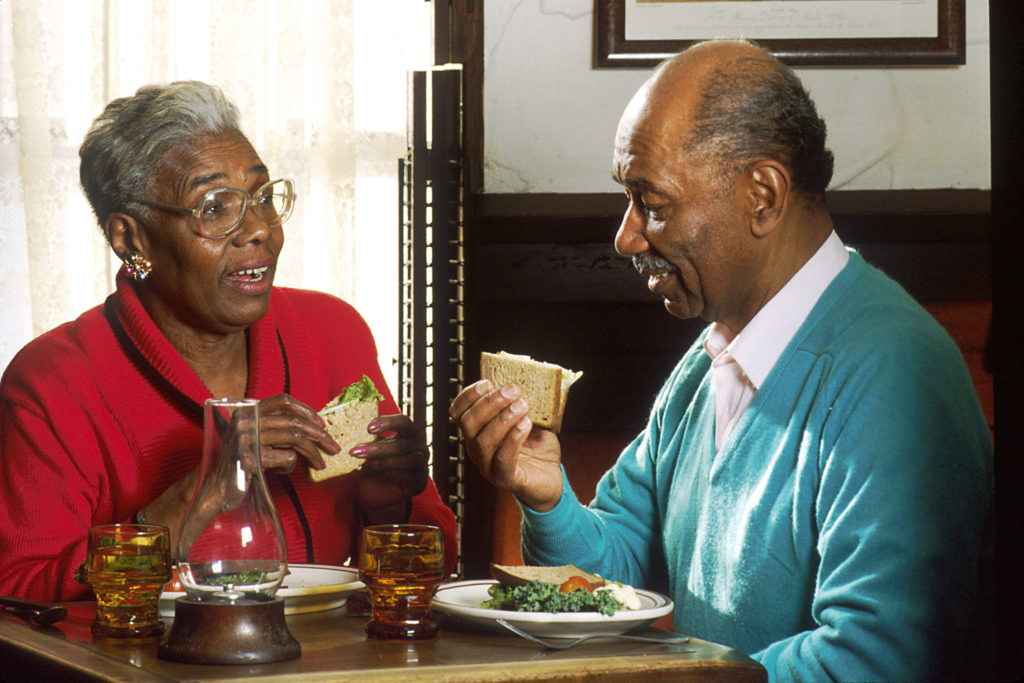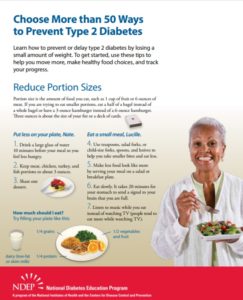by Susan Buchanan. This article originally appeared in the Louisiana Weekly.

In the United States, diabetes is most prevalent among Southerners and residents of Appalachian regions. Blacks are afflicted more than whites. Over a third of African American seniors are diagnosed as diabetic.
The prevalence of diabetes increases with age, Kelly Zimmerman, spokeswoman for Louisiana’s Department of Health, said last week. Adults ages 65 and older had the highest rate in the state last year at 26.1 percent. Diabetes among all of Louisiana’s adults 18 years and above was 13.6 percent. For the state’s African American adults of all ages, the rate was 16.7 percent last year versus 11.8 percent for whites, she said.
Diabetes Has Tripled in U.S.
In the past two decades, U.S. adults diagnosed with diabetes have more than tripled as the population has aged and gained weight, the Centers for Disease Control and Prevention in Atlanta said this past September.
Researchers have studied genetics, weight and other diabetes risk factors for African Americans. Weight may be the biggest one, according to a study out in 2017, from Northwestern University researchers. Earlier analyses of genetics were less conclusive.
A study of 7,021 African Americans, published in 2012, looked at the role of genetics in the roughly twofold incidence of type 2 diabetes in African Americans versus European Americans. It was conducted by researchers at Johns Hopkins, Harvard Medical School, the UCLA, Jackson State University in Mississippi and other institutions.
“In African Americans, genetic ancestry has a significant effect on the risks of type 2 diabetes that are independent of the contribution of socioeconomic status,” they concluded. But the researchers went on to say that no single gene can explain a large portion of the differences in risk. African ancestry contributes to the risk of type 2 diabetes through genetic and non-genetic pathways. “The effect of ancestry on any individual locus in the genome is likely to be modest, but in aggregate, differences in ancestry may contribute substantially to the observed ethnic disparity in risk,” they said.
Results of a 2017 study by researchers at Northwestern University’s Feinberg School of Medicine found that obesity drives different rates of diabetes between races. The study included 4,251 Blacks and whites from Birmingham, Alabama; Oakland, California; Minneapolis and Chicago.
“Traditional risk factors for diabetes, such as obesity and low socioeconomic status, are more common among Blacks compared with whites,” Dr. Michael Bancks, now at Wake Forest School of Medicine, said in a November interview. “Comparing the two groups without taking these differences into account, you observe that blacks have a greater risk for developing diabetes. When traditional diabetes risk factors, such as weight and educational attainment, are equal between the two race groups, we no longer observe a disparity in the development of diabetes.”
Bancks continued, “The take-home message from our study is that black men and women gained more weight, and black women more central adiposity, than whites in young adulthood, and these measures of obesity were most strongly related to the diabetes disparity occurring in middle age between blacks and whites. It’s important to note that blacks were exposed to lower levels of education and greater neighborhood segregation and poverty, compared to whites, at the start of the study and over the 30 years of follow-up.” Central adiposity is the accumulation of fat around the abdominal area.
“To eliminate the race disparity in diabetes, public health strategies should address social and economic conditions that influence health, including access to educational, economic and job opportunities, and community resources that support health,” Bancks said.
Rising Obesity Rates
In Louisiana, obesity has climbed since 1990. In 2017, the Pelican State had the sixth-highest rate of adult obesity in the United States, and 34.2 percent of residents 65 or older were considered obese. Being greatly overweight puts people at higher risk of chronic conditions like diabetes and heart disease. Louisiana was seventh in the nation for diabetes as a cause of death in 2016, according to the CDC.
Diabetes can be type 1, but over 90 percent of American diabetics are type 2. A person with type 2 resists the effects of insulin—a hormone regulating the movement of sugar into cells—or doesn’t produce enough insulin to maintain a normal glucose level, according to the Mayo Clinic in Minnesota. Type 1 diabetes is a condition in which the pancreas produces little or no insulin.
Being overweight is one of the factors that increases risk for type 2, the Mayo Clinic says. The more fatty tissue one has, the more resistant cells become to insulin.
But you don’t have to be overweight to develop type 2 diabetes. When the body stores fat in the abdomen, the risk of type 2 is greater than if it’s stored in hips and thighs. The less active someone is, the greater the risk of type 2. And risk of type 2 is higher if your parent or sibling has diabetes. Blacks, Hispanics, American Indians and Asian Americans are more likely to develop type 2 than whites are.
Risk increases as one gets older, especially after age 45, the Mayo Clinic says. That’s probably because people tend to exercise less, lose muscle mass and gain weight as they age.
Someone with diabetes has a high risk for stroke and other complications, such as kidney failure, blindness and amputations. Diabetes needs to be managed to control risks.
CDC’s Prescription
 In resources for African Americans, the CDC’s National Diabetes Education Program advises consuming a variety of foods in moderate portions, cutting back on high-fat foods, drinking lots of water, engaging in at least 30 minutes of physical activity five days a week, and relaxing with reading, deep breathing or music.
In resources for African Americans, the CDC’s National Diabetes Education Program advises consuming a variety of foods in moderate portions, cutting back on high-fat foods, drinking lots of water, engaging in at least 30 minutes of physical activity five days a week, and relaxing with reading, deep breathing or music.
In its resources, the CDC advises cooking with less oil and butter, and stir frying, broiling or baking with no-stick sprays or low-salt broths. Use a mix of spices instead of salt. Try dishes from other countries that are full of vegetables, whole grains and beans, the CDC suggests. At snack time, slow down with low-fat popcorn rather than a quickly consumed candy bar. When away from home, bring a snack of nuts, whole grain crackers or fruit. For more ideas, visit www.cdc.gov/diabetes/ndep/communities/african-american/resources.html
Louisiana has five dozen Diabetes Self-Management Education and Support Programs that follow national guidelines. In one next summer, “Well-Ahead Louisiana is partnering with Texas A&M AgriLife Extension Service on a new diabetes self-management program, specifically for rural African American communities in St. Landry and Acadia parishes,” Zimmerman said.
The seven-week course will focus on healthy eating, the benefits of physical activity, stress management and sticking with medications. Across the nation, diabetes tends to be more prevalent in rural than urban areas, but rural parishes and counties have fewer DSMES services. Well-Ahead Louisiana is a state Department of Health initiative to help residents. To find a diabetes self-management program near you in Louisiana, see http://www.wellaheadla.com/Well-Ahead-Community/Community-Resource-Guide
In addition to the pain and suffering from diabetes, African-American seniors often struggle to pay for treatment. Starting at age 65, most Americans are enrolled in Medicare, and many purchase their insulin and other medications through prescription drug plan Part D. But seniors, like others, have been affected by a surge in insulin prices over the last decade. Some older patients skimp on needed medications that they can’t afford.
People with diagnosed diabetes have medical expenses that are 2.3 times higher than what they’d incur without it, according to the American Diabetes Association. In the United States, the cost of diagnosed diabetes last year for all ages was estimated at $327 billion, up 26 percent from five years before.
Susan Buchanan wrote this article for with support from the Gerontological Society of America, the Journalists Network on Generations and the Silver Century Foundation.
The opinions expressed in this article are those of the author and do not necessarily reflect those of the Diverse Elders Coalition.

